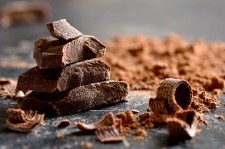Is Chocolate Good for the Teeth? A Practical Outlook from the Sacramento Dentistry Group

SACRAMENTO, Calif., April 15, 2019 (Newswire.com) - In February, the United States celebrated Valentine’s Day, the holiday that leads to the country’s largest annual chocolate-buying surge. Next up is Easter, bringing chocolate bunnies and chocolate eggs. How do most dentists feel about all these candy purchases, including the professionals at the Sacramento Dentistry Group?
Chocolate Does Have Its Advantages
One of the nation’s largest dental insurers, Delta Dental, reports that 80 percent of dentists who give away candy at some point during the year only give out chocolate, especially dark chocolate. Relatively speaking, dark chocolate is the least detrimental of candies and the most likely to actually do the consumer some good. Here are some of the advantages of eating chocolate, especially compared to candies that are strictly made out of sugar and flavorings.
The major components of any chocolate should be products of the cacao bean, seed of the tropical cacao plant. (Cacao beans are processed with heat to make the well-known cocoa.) When buying chocolate, check the ingredients list to make certain it does not contain sugar as its first ingredient or merely cocoa imitations.
Real chocolate contains antioxidants. These molecules are anti-inflammatory, promote relaxed blood vessels and reduce the risk of diabetes. Cocoa also contains significant amounts of magnesium and iron, minerals important for a healthy diet. These benefits may explain why eating chocolate is linked to a reduction in the presence of blocked arteries.
On the dental side of health, chocolate tends to dissolve faster than sugar-based candies, so it spends less time on the teeth feeding the bacteria that cause tooth decay and gum disease. It may also contain substances that retard the growth of certain oral bacteria linked to cavities. Nevertheless, this does not mean that eating chocolate eliminates the need to brush the teeth after meals.
Responsible Chocolate Eating
From the dental health perspective, solid chocolate is far better than chocolate filled with sugary confections, like caramel or marshmallow. And no matter whether it’s filled or not, chocolate is a fatty food, so it must be consumed in moderation to avoid weight gain. Finally, the antioxidants in chocolate are potent creators of tooth stains, although that is strictly a cosmetic disadvantage.
The Sacramento Dentistry Group has assisted readers of its website with finding answers to dental questions for many years. For more facts about chocolate and the effect of various foods and beverages on dental health, visit the site at sacramentodentistry.com or ask for an exam with one of the dentists at their downtown Sacramento office by calling 916-538-6900.
Source: Sacramento Dentistry Group
